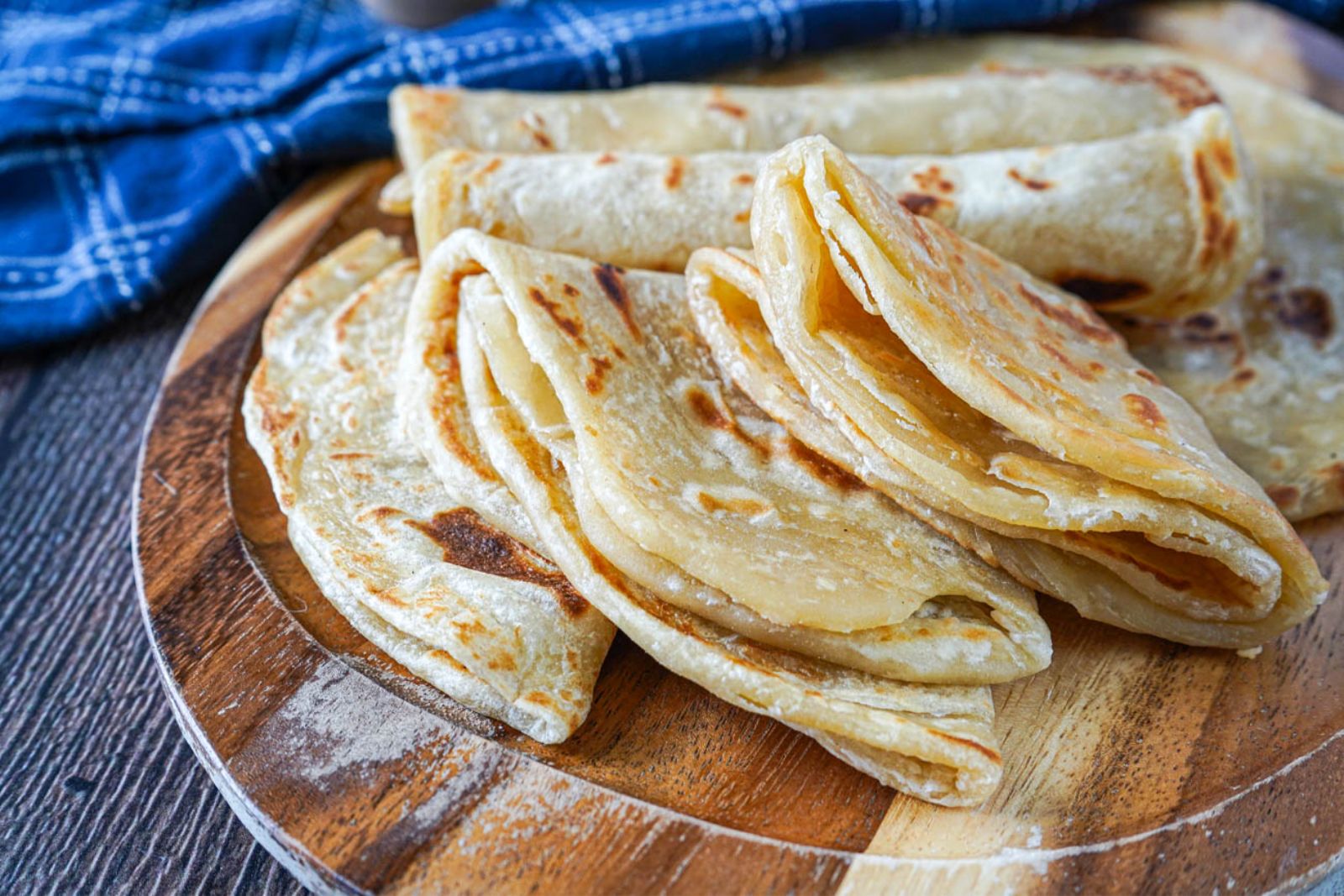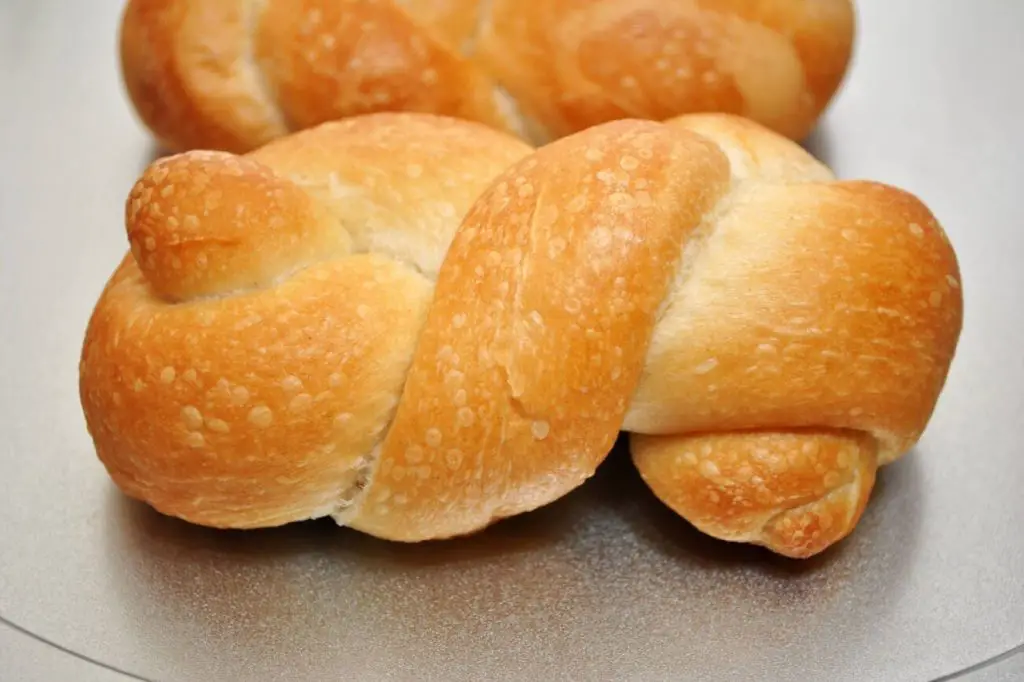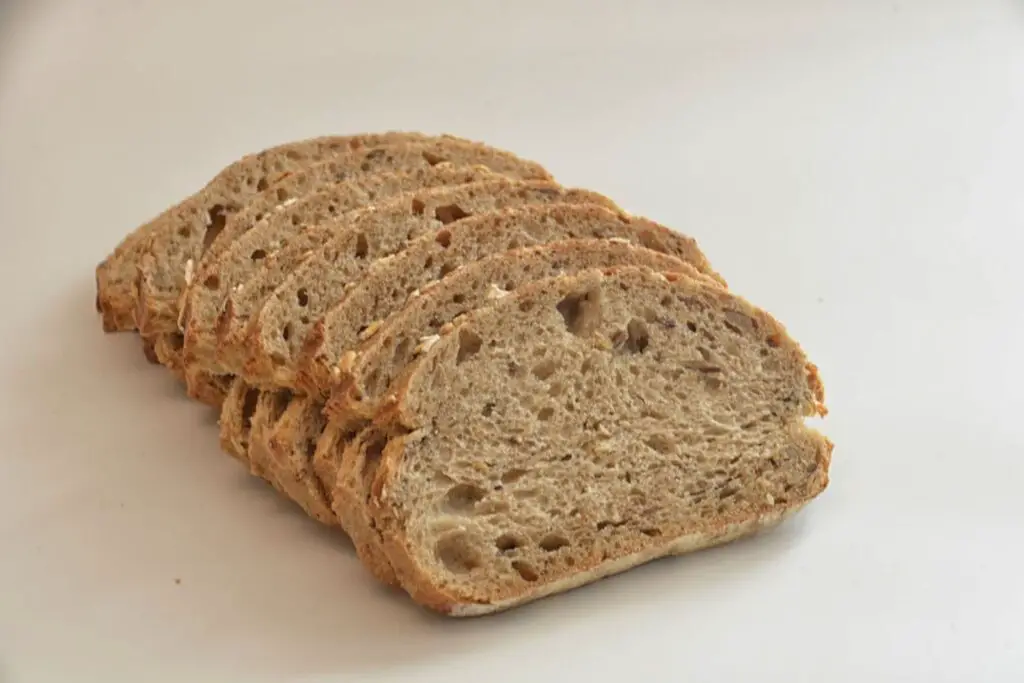
Chapati, also known as roti, is a traditional Indian flatbread that is widely enjoyed for its versatility and delicious taste. Whether you make chapati in large quantities or simply want to save some for later use, freezing is an excellent way to preserve their freshness and ensure you have a convenient and ready-to-eat option on hand. Freezing chapati is a simple process that involves a few easy steps. In this article, we will provide a comprehensive guide on how to freeze chapati while maintaining their texture and flavor for future consumption.
Here’s a step-by-step guide on how to freeze chapati:
Step 1: Prepare fresh chapati
To start the process of freezing chapati, it’s important to have freshly made chapati. You have two options: you can either make them from scratch using your favorite recipe or purchase them from a store.
If you choose to make chapati from scratch, gather the necessary ingredients and follow your preferred recipe. Knead the dough well until it becomes smooth and elastic. Divide the dough into small portions and roll them out into thin, round discs. Cook the chapati on a hot skillet or tawa until both sides are cooked and have light golden-brown spots. It’s essential to cook them thoroughly to ensure their quality when frozen and reheated.
On the other hand, if you opt to buy chapati from a store, make sure to select fresh ones that have been recently made. Check the expiration date or the “best before” date to ensure their freshness. It’s important that the chapati have cooled down to room temperature before proceeding with the freezing process. This helps prevent condensation, which can lead to ice crystals and affect the texture of the frozen chapati.
Whether you make chapati at home or purchase them, ensuring that they are freshly made and have cooled down to room temperature is crucial. This step sets the foundation for freezing chapati successfully and retaining their quality when it’s time to thaw and reheat them.
Can I freeze leftover chapatis that have already been cooked?
Yes, you can freeze leftover chapatis that have been already cooked. Allow the cooked chapatis to cool completely before freezing. Place them in an airtight container or freezer bag, separating each chapati with parchment paper or wax paper to prevent them from sticking together. When you’re ready to use them, thaw the frozen chapatis and reheat them on a skillet or tawa until they are warm and pliable.
Step 2: Separate the chapati
After you have prepared fresh chapati, the next step is to separate them individually. This is done to make it easier to thaw and use them later without having to defrost the entire batch at once.
Separating the chapati individually allows you to have more flexibility when it comes to using them. Instead of defrosting a large batch of chapati when you only need a few, you can simply take out the desired number of chapati from the freezer without disturbing the rest.
By separating the chapati, you can avoid the hassle of thawing and refreezing unused portions. This helps maintain the overall quality of the chapati and prevents them from becoming soggy or losing their texture. It also minimizes food waste, as you can thaw only the amount you need at a given time.
To separate the chapati, you can stack them one on top of the other and then gently peel them apart. If they stick together, you can use a piece of parchment paper or plastic wrap to separate them without damaging their shape.
Step 3: Wrap the chapati
Once you have separated the chapati, the next step is to wrap each chapati individually with either plastic wrap or aluminum foil. This wrapping process is essential to protect the chapati from freezer burn and help retain their moisture during freezing.
Freezer burn occurs when moisture evaporates from the surface of the food, leading to dehydration and a deterioration in quality. By wrapping each chapati, you create a barrier that prevents excessive moisture loss and exposure to air, reducing the risk of freezer burn.
Both plastic wrap and aluminum foil are suitable materials for wrapping chapati. Plastic wrap is transparent and tightly clings to the surface, creating a seal that minimizes air contact. Aluminum foil, on the other hand, provides a thicker and more durable layer of protection against air and moisture.
To wrap the chapati, place one chapati in the center of a piece of plastic wrap or aluminum foil. Bring the edges of the wrap or foil over the chapati and press them together to seal it securely. Make sure there are no gaps or openings that could allow air to reach the chapati.
Wrapping each chapati individually offers several benefits. It prevents the chapati from sticking together, making it easier to remove and thaw only the desired amount. It also helps maintain the chapati’s shape and texture, ensuring that they retain their freshness and taste when thawed and reheated.
Should I wrap chapatis individually or stack them together before freezing?
It is generally recommended to wrap chapatis individually before freezing rather than stacking them together. Wrapping them individually helps to prevent them from sticking to each other and allows for easier portioning when you need to thaw only a few chapatis at a time. Additionally, individual wrapping helps to maintain the shape and texture of each chapati during freezing and thawing. Stacking them together without any separation may cause them to fuse together and become difficult to separate when frozen.
Step 4: Place in a freezer bag
Once you have wrapped each chapati individually, the next step is to transfer them into a freezer bag. Placing the wrapped chapati in a freezer bag provides an additional layer of protection and helps maintain their quality during freezing.
Freezer bags are designed to withstand low temperatures and are thicker than regular storage bags, making them more suitable for long-term freezer storage. They help create a barrier against moisture and air, preventing freezer burn and maintaining the freshness of the chapati.
To place the wrapped chapati in a freezer bag, open the bag and carefully arrange the wrapped chapati inside. If you are freezing multiple chapati, you can stack them neatly, making sure they are not overcrowded. It’s important to leave some space between the chapati to allow for proper airflow and freezing.
Before sealing the freezer bag, squeeze out as much excess air as possible. Air trapped inside the bag can lead to the formation of ice crystals, which can affect the texture and quality of the chapati. Pressing out the air reduces the chances of freezer burn and helps maintain the moisture content of the chapati.
Once you have squeezed out the air, seal the freezer bag tightly. Double-check that the seal is secure to prevent any air or moisture from entering the bag.
Placing the wrapped chapati in a freezer bag offers an added layer of protection and ensures that the chapati are well-insulated during freezing. The bag helps maintain the quality, taste, and texture of the chapati, allowing them to remain fresh for an extended period until you’re ready to thaw and enjoy them.
How can I prevent frozen chapatis from sticking together?
To prevent frozen chapatis from sticking together, it’s important to take a few steps. First, ensure that the chapatis are completely cooled before freezing. Next, wrap each chapati individually in plastic wrap or place parchment paper between them to create a barrier. Lastly, store the wrapped chapatis in an airtight container or freezer bag to minimize moisture exposure, which can contribute to sticking.
Step 5: Label and date the bag
After placing the wrapped chapati in the freezer bag, it is important to label and date the bag. By doing so, you can keep track of the freezing date and ensure that you use the oldest chapati first when it comes time to thaw and consume them.
Labeling and dating the bag serves as a helpful reminder of when the chapati were frozen. It allows you to maintain an organized system in your freezer and prevents the chapati from being forgotten or left unused for an extended period.
Using a marker or a label, write the date of freezing on the bag. Be sure to write it clearly and prominently so that it remains visible even when the bag is stored alongside other items in the freezer.
By having the date clearly marked, you can easily identify the order in which the chapati were frozen. This ensures that you prioritize using the oldest ones first, helping to maintain their optimal freshness and flavor.
Additionally, labeling the bag can also provide other useful information, such as the quantity or any specific variations in the chapati. This can be helpful if you have different types of chapati or if you want to keep track of the number of servings available.
Overall, labeling and dating the bag is a simple yet important step in the freezing process. It helps you stay organized, prevents waste, and ensures that you can enjoy the chapati in the order in which they were frozen, guaranteeing a delightful dining experience.
Step 6: Store in the freezer
Once you have labeled and dated the bag of wrapped chapati, it’s time to store them in the freezer. Proper storage is crucial to maintain the quality and texture of the chapati throughout their freezing period.
Place the bag of wrapped chapati in the freezer, ensuring that they are stored in a flat position. This helps prevent the chapati from getting crushed or bent during freezing, preserving their shape and texture.
It is also important to choose a suitable section in the freezer for storing the chapati. Select a location where they won’t be disturbed or exposed to fluctuating temperatures. Fluctuations in temperature can lead to thawing and refreezing, which can negatively impact the quality of the chapati.
Ideally, place the bag in a section of the freezer where it won’t come into contact with other frozen items or be at risk of being jostled around. This will help maintain the integrity of the chapati and minimize the chances of damage or freezer burn.
By storing the chapati in a flat position and in a designated section of the freezer, you ensure that they are preserved in the best possible condition. This step contributes to maintaining their taste, texture, and overall quality, allowing you to enjoy delicious chapati whenever you’re ready to thaw and serve them.
Remember to handle the bag of chapati with care while placing it in the freezer to avoid any accidental damage. By following these storage guidelines, you can maximize the shelf life of the chapati and ensure a delightful culinary experience in the future.
How long can frozen chapati stay good in the freezer?
Frozen chapatis can stay good in the freezer for up to 3 to 6 months. However, it is recommended to consume them within the first 3 months for optimal taste and texture. Over time, the quality of frozen chapatis may deteriorate, leading to changes in flavor and texture. It’s important to store them properly in airtight containers or freezer bags to maintain their freshness for as long as possible.
Step 7: Thaw and reheat
When the time comes to enjoy the frozen chapati, it’s important to thaw them properly before reheating. Thawing allows the chapati to regain their softness and pliability, making them ready for consumption. Here’s how to thaw and reheat frozen chapati:
- Remove the desired number of chapati from the freezer bag: Take out the number of chapati you plan to use and reseal the bag promptly to prevent the remaining chapati from thawing unnecessarily.
- Let them thaw at room temperature: Place the frozen chapati on a plate or a clean surface and allow them to thaw at room temperature. This typically takes around 1 to 2 hours, depending on the thickness of the chapati and the temperature of the room. Avoid thawing them on a heated surface or using hot water, as this can cause the chapati to become soggy.
- Reheat on a hot skillet: Once the chapati have thawed, you can reheat them on a hot skillet or tawa. Preheat the skillet over medium heat and place one chapati at a time on the skillet. Cook each side for about 15 to 30 seconds until it becomes warm and slightly toasted. Flip the chapati occasionally to ensure even heating.
How do I defrost chapati?
To defrost chapatis, remove them from the freezer and transfer them to a plate or a clean surface. Allow them to thaw at room temperature for about 1 to 2 hours until they become soft and pliable. If you’re in a hurry, you can use a microwave by wrapping the chapatis in a damp paper towel and heating them on the defrost setting for 30 seconds to 1 minute. Once defrosted, reheat the chapatis on a skillet or tawa for a few seconds on each side to regain their warmth and texture.
Can I reheat frozen chapatis in the microwave?
Yes, you can reheat frozen chapatis in the microwave. To do so, place a frozen chapati on a microwave-safe plate and cover it with a damp paper towel. Microwave it on high for about 30 seconds to 1 minute until it becomes warm and pliable. However, keep in mind that microwaving may result in a softer texture compared to reheating on a stovetop, so adjust the time accordingly based on your desired texture.
Other related question
Can I refreeze previously thawed chapati?
It is generally not recommended to refreeze chapatis that have been previously thawed. Each time you freeze and thaw a food item, it undergoes changes in texture and quality. Refreezing chapatis can further degrade their taste, texture, and overall quality. It’s best to thaw only the amount of chapatis you plan to use to minimize the need for refreezing and preserve their freshness.
How do I know if my frozen chapati has gone bad?
To determine if your frozen chapati has gone bad, there are a few signs to look out for. First, check for any unusual odors. If the chapati emits a foul or off-putting smell, it may indicate spoilage. Next, visually inspect the chapati for any signs of mold, discoloration, or freezer burn. If you notice any of these abnormalities, it’s best to discard the chapati. Lastly, if the texture or taste of the thawed chapati is significantly different from fresh chapatis, it could be an indication of spoilage, and it is safer to avoid consuming it.
Can I use frozen chapati with the fresh ones?
Yes, you can use frozen chapati alongside fresh ones. It’s convenient to have frozen chapatis on hand for quick meals or when fresh ones are not readily available. Simply thaw the frozen chapatis following the defrosting instructions, and then heat them on a skillet or tawa to warm them up. You can serve and enjoy the frozen chapatis alongside the fresh ones without any issues.
Can I freeze chapati dough instead of cooked chapatis?
Yes, you can freeze chapati dough instead of cooked chapatis. Prepare the dough as you normally would, divide it into portions, and shape them into balls. Lightly coat each ball of dough with oil to prevent sticking and place them in an airtight container or freezer bag. When ready to use, thaw the dough in the refrigerator overnight, bring it to room temperature, and then roll and cook the chapatis as usual.
Can I freeze chapatis with different fillings or flavors?
Yes, you can freeze chapatis with different fillings or flavors. Prepare the chapatis with the desired fillings or flavors, such as cheese, vegetables, or spices. Once filled, let the chapatis cool completely, wrap them individually in plastic wrap or foil, and place them in a freezer-safe bag or container. Thaw and reheat them when needed, ensuring the fillings are properly heated before consuming.
Can I freeze chapatis that have been brushed with ghee or oil?
Yes, you can freeze chapatis that have been brushed with ghee or oil. However, keep in mind that the texture of the chapatis may slightly change after freezing and reheating. The ghee or oil may get absorbed into the chapati during freezing, potentially making it softer. It’s best to brush the chapatis with ghee or oil after thawing and reheating to maintain their desired texture and flavor.
Can I freeze chapatis made from whole wheat or other types of flour?
Yes, you can freeze chapatis made from whole wheat or other types of flour. The freezing process is suitable for chapatis made from various types of flour, including whole wheat, all-purpose flour, or even gluten-free flours. The key is to ensure proper wrapping and storage to maintain their quality and texture during freezing.
Can I freeze chapatis with toppings like cheese or vegetables?
Yes, you can freeze chapatis with toppings like cheese or vegetables. However, it’s important to note that the texture of the toppings may change slightly after freezing and thawing. To freeze chapatis with toppings, prepare them as usual, allow them to cool, and then wrap them individually, ensuring the toppings are securely wrapped. Thaw and reheat them, taking care to properly heat the toppings to ensure they are thoroughly cooked before consumption.
How many chapatis should I freeze at once for convenient use?
The number of chapatis you should freeze at once for convenient use depends on your personal preferences and needs. It’s a good idea to freeze chapatis in portion sizes that align with your typical consumption. For example, if you typically have two chapatis per meal, freezing them in sets of two would be convenient. Consider your meal plans and portion sizes to determine the quantity that works best for you.
Can I freeze chapatis that have been cut into smaller pieces?
Yes, you can freeze chapatis that have been cut into smaller pieces. If you have leftover chapatis or want to freeze smaller portions for convenience, you can cut them into pieces before freezing. Ensure that the smaller pieces are cooled completely, then place them in an airtight container or freezer bag, separating them with parchment paper or wax paper to prevent sticking. Thaw and reheat the desired number of chapati pieces when needed.








